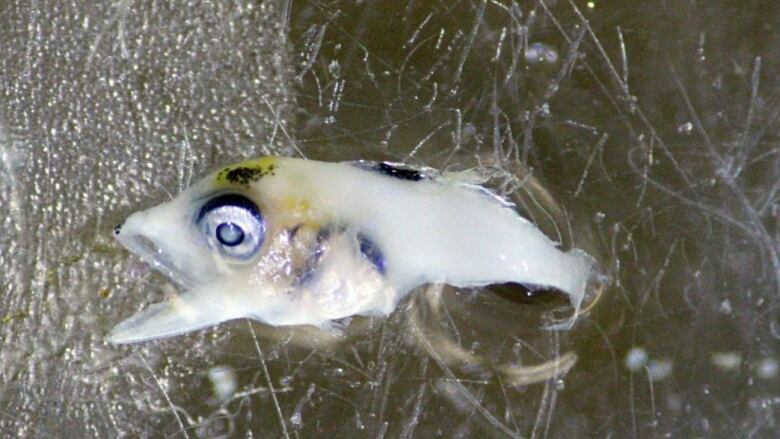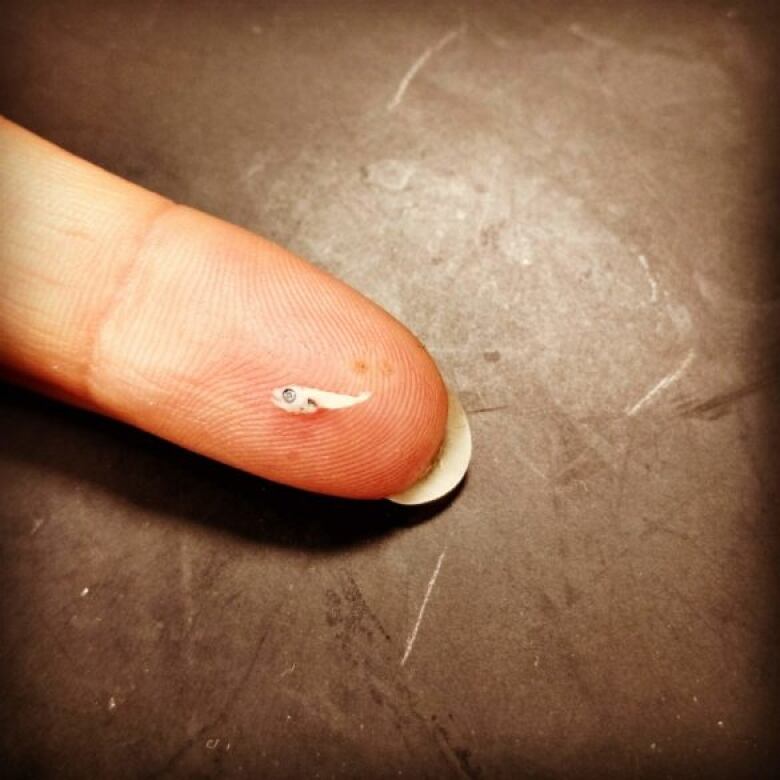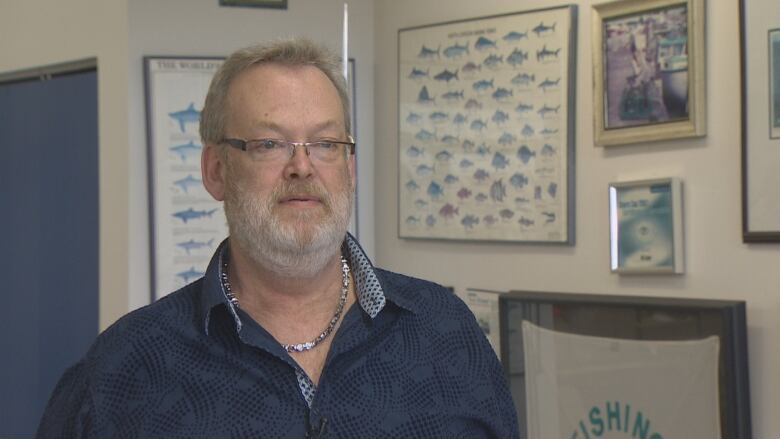New research affirms possibility of a 3rd Atlantic bluefin tuna spawning ground
Third spawning ground would be a 'game changer,' says fisherman

More scientists are asserting the existence of a "major spawning ground" for Atlantic bluefin tuna off the United States.
The prospect of a so-called third spawning ground has significant implications for the giants that venture into Atlantic Canadian waters each year, including how the species is managed and their resilience in the face of climate change.
"I think it is really important to be aware of that region, to have baseline knowledge about what's happening there," said Christina Hernandez, a researcher at Cornell University and lead author of a study published this month in the Canadian Journal of Fisheries and Aquatic Sciences.
The results "provide supporting evidence that the Slope Sea [between the mid Atlantic States and the Gulf Stream] is a major spawning ground that is likely to be important for population dynamics," the study stated.
In 2016, scientists used plankton nets to collect tuna larvae in the Slope Sea and in the Gulf of Mexico, a place which was previously considered the lone spawning ground for "western" bluefin tuna on this side of the Atlantic. The other Atlantic bluefin spawning ground for the "eastern" population is the Mediterranean Sea.
Researchers used tiny ear bones known as otoliths to determine the age of the larvae.

Hernandez and her collaborators took that data and used particle tracking simulations to test whether the young could have been hatched in the Gulf of Mexico.
The larvae were converted into tiny beads for the purposes of the simulation and placed in a high-resolution physical model of ocean currents.
"We ran the model backwards in time and asked where did the spawning activity occur that led to that larva being observed at that location where we collected it. And we find that over 97 per cent of the larvae that we collected in 2016 were in fact spawned in the Slope Sea," Hernandez said.

"They're not old enough for them to have come from the Gulf of Mexico."
At the time of the study, Hernandez was a doctoral student at the Massachusetts Institute of Technology (MIT) and Woods Hole Oceanographic Institution joint ocean science program.
The study hypothesizes that the tuna spawning off the U.S. are younger than those in the Gulf of Mexico.
The prospect that younger tuna are reproducing in an area not surveyed is a "game changer" according to Troy Atkinson, who represents fishermen who harvest bluefin tuna in Canadian waters.
"It automatically increases your spawning stock biomass, which is always the concern, and it will potentially increase the number of recruits or young fish coming into the fishery since they have never counted anything coming from anywhere except the Gulf of Mexico previously,'' said Atkinson.
"And if you've only been considering these older fish, the ones old enough to rebuild your population, you haven't been counting any contribution from these younger fish over that time period. It will show that the spawning stock biomass is much bigger than has ever been thought to be the case. When you change all those assumptions within the modelling exercise, then you would expect a much better result for the stock."

The existence of another spawning ground may be critical given the effects of climate change, Hernandez said.
"Projections predict that the Gulf of Mexico will become unsuitable for adults to enter at all by 2050 or by the end of the century. And the Slope Sea may become a very important source of bluefin tuna reproduction."
Hernandez says bluefin migrate farther as they get older and larger, making it more likely the big fish in Atlantic Canada are robust enough to travel all the way to the Gulf of Mexico to reproduce.
"They are still going to be really vulnerable to climate change as the Gulf of Mexico becomes too hot for them and they start experiencing cardiac distress when they enter the Gulf of Mexico. They may start to spawn in more northerly regions," said Hernandez.
Both she and her fellow authors say more research is needed in the Slope Sea.
The study notes not everyone accepts that it is a spawning ground "with some voices expressing skepticism about the origin of larvae or asserting that classification as a spawning ground was premature."
"An important open question is the abundance, distribution, and identity of the spawning adults in the Slope Sea," the study noted.
"Bluefin in the Slope Sea should be sampled across a wide range of sizes for histological analyses to determine what sizes of bluefin are reproductively active in the region. Reproductively active individuals can also be tested for stock identity using otolith microchemistry."












_(720p).jpg)


 OFFICIAL HD MUSIC VIDEO.jpg)
.jpg)



























































































